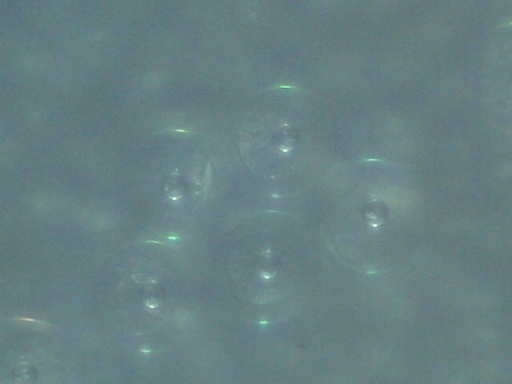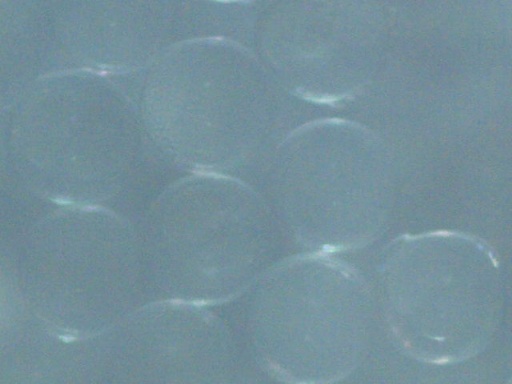Author
|
Message

|
 Breeding Journal, Species: Synchiropus splendidus
Sunday, August 28, 2011 7:53 AM
Breeding Journal, Species: Synchiropus splendidus
Sunday, August 28, 2011 7:53 AM
( permalink)
Breeding Journal DataSheet
This first post should be updated regularly to include new information as events take place or changes are made to your system General Species: Synchiropus splendidus Social Structure: Male/female pair Size of Individuals: 2" female/2.5" male Age of Individuals: Female is around 1 year ORA CB, Male is wild caught Date added to Tank: Sept 2010 Broodstock Tank Details Size of Tank: 90 gallon Substrate Details: Sand Filtration Details: Central Water Changes: varies Water Temperature: 72-77 Lighting: 4 x t5's Lighting Cycle: varies Other Tank Inhabitants: 14 seahorse and a pair of hectors gobies Broodstock Feeding Details Food Types: Mysid only Feeding Schedule: 3-6 times daily Spawning Details Date of First Spawn: 8/28/2011 Spawn Time of Day: Hour before lights out or 7 pm Dates of Consecutive Spawns: 9/5/2011 Courtship Details: See video Egg Size: 1mm Egg Color: Clear with small white spot Egg Count: Unknown, I only found 50 or so Hatch Details Hatch Date: 9/6/2011 Hatch Time of Day: Unknown # Days after Spawn: hours Larvae Description: prolarvae, they look like a mini tadpole or a oblong egg with a tail Larval Tank Details Temperature: 77-80 Size of Larval Tank: 10 gallon Substrate Details: none Other Tank Decor: none Filtration Details: none Lighting: Ceiling lights Lighting Cycle: varies Water Changes: none Larval Feeding Details Food Types: A.tonsa Feeding Schedule: Started the culture in the larvae tank a few days before Metamorphosis/Settlement Date of Settlement Start: Days after Hatch: Date of Settlement End: Description of Fry:
Grow-Out Tank Details Temperature: Size of Grow-Out Tank: Substrate Details: Other Tank Decor: Filtration Details: Lighting: Lighting Cycle: Water Changes: Size at Transfer: Age at Transfer: Grow-Out Feeding Details Food Types: Feeding Schedule: Additional Information (No Pictures or Videos in the Section Please) Miscellaneous Information: You will be required to provide photographic or video evidence in this thread of each event submitted for the MBI Program.
If your thread does not contain these photos the MBI Committee will not be able to approve your reports. PHOTOS AND VIDEO S MUST BE PLACED IN ADDITIONAL POSTS, NEVER IN THE FIRST POST IN A JOURNAL.
<message edited by wdt on Tuesday, November 1, 2011 2:35 PM>
|
|
|
 Re: Breeding Journal, Species: Synchiropus splendidus
Sunday, August 28, 2011 7:56 AM
Re: Breeding Journal, Species: Synchiropus splendidus
Sunday, August 28, 2011 7:56 AM
( permalink)
@ 0:18-20 you can see the release on my video, sorta hard to see on the youtube video. I they keep it up I will grab the eggs, I was already setup to grab goby and clownfish eggs last night so no go. http://www.youtube.com/watch?v=-gzSdrYNZGs
|
|
|
 Re: Breeding Journal, Species: Synchiropus splendidus
Monday, September 5, 2011 7:15 PM
Re: Breeding Journal, Species: Synchiropus splendidus
Monday, September 5, 2011 7:15 PM
( permalink)
Are these Mandarin eggs?  Closer 
|
|
|
 Re: Breeding Journal, Species: Synchiropus splendidus
Monday, September 5, 2011 7:22 PM
Re: Breeding Journal, Species: Synchiropus splendidus
Monday, September 5, 2011 7:22 PM
( permalink)
Is there any oil globule ? If I remember correctly, mandarim eggs do not have one and most ornamental pelagic spawners do.
|
|
|
 Re: Breeding Journal, Species: Synchiropus splendidus
Monday, September 5, 2011 7:35 PM
Re: Breeding Journal, Species: Synchiropus splendidus
Monday, September 5, 2011 7:35 PM
( permalink)
Not sure, to the naked eye the eggs seem to have a small white sphere inside. Would this be a oil globule? I found the eggs floating on the surface and many seem to stick to each other.
Only other fish in the tank are seahorses and Hector's gobies.
|
|
|
 Re: Breeding Journal, Species: Synchiropus splendidus
Monday, September 5, 2011 7:53 PM
Re: Breeding Journal, Species: Synchiropus splendidus
Monday, September 5, 2011 7:53 PM
( permalink)
 Originally Posted by Only other fish in the tank are seahorses and Hector's gobies. So mandarim eggs they are.  Here are Matt Pedersen pics of mandarim eggs and Centropyge argi eggs C. argi  S. splendidus S. splendidus 
|
|
|
 Re: Breeding Journal, Species: Synchiropus splendidus
Tuesday, September 6, 2011 6:09 PM
Re: Breeding Journal, Species: Synchiropus splendidus
Tuesday, September 6, 2011 6:09 PM
( permalink)
Thanks Anderson
The prolarvae are now swimming/moving around, so I am already doing better than expected. Their is loaded in A.tonsa. Not sure what else I should do.
|
|
|
 Re: Breeding Journal, Species: Synchiropus splendidus
Wednesday, September 7, 2011 2:19 PM
Re: Breeding Journal, Species: Synchiropus splendidus
Wednesday, September 7, 2011 2:19 PM
( permalink)
May I ask what you used for a incubation/hatching vessel? Did you provide any flow etc.
|
|
|
 Re: Breeding Journal, Species: Synchiropus splendidus
Wednesday, September 7, 2011 2:40 PM
Re: Breeding Journal, Species: Synchiropus splendidus
Wednesday, September 7, 2011 2:40 PM
( permalink)
10 gallon with light air flow provided by an airstone. I placed the airstone to one side of the tank to create the kind of flow I thought would keep them from ending up in the corners. I am basically going with the method spawner posted on MOFIB. It just intended to use this tank for my gobies today, not two day ago for mandarin eggs. That said they are still alive so conditions must OK. Water seems to be clearing fast so I am guessing some rotifers got into the tank..
|
|
|
 Re: Breeding Journal, Species: Synchiropus splendidus
Wednesday, September 7, 2011 3:37 PM
Re: Breeding Journal, Species: Synchiropus splendidus
Wednesday, September 7, 2011 3:37 PM
( permalink)
|
|
|
 Re: Breeding Journal, Species: Synchiropus splendidus
Wednesday, September 7, 2011 6:09 PM
Re: Breeding Journal, Species: Synchiropus splendidus
Wednesday, September 7, 2011 6:09 PM
( permalink)
Thats the one. I am using T. Iso, Tet, and Thal. But I have a delay in my next phyto harvest and I did not intend to have two(one for the mandarins and one for the gobies) of these going at once so I am short on phyto. I checked them again just a minute ago and they are still alive.
|
|
|
 Re: Breeding Journal, Species: Synchiropus splendidus
Thursday, September 8, 2011 7:22 AM
Re: Breeding Journal, Species: Synchiropus splendidus
Thursday, September 8, 2011 7:22 AM
( permalink)
Here is a video of the bubble rate. I have only added freshwater to keep salinity in check so far. I could not get a good shot without turning off the air and I didn't want to risk causing problems so this is all I have atm  The first photo is misleading as they don't look that developed in person.  
|
|
|
 Re: Breeding Journal, Species: Synchiropus splendidus
Thursday, September 15, 2011 8:21 AM
Re: Breeding Journal, Species: Synchiropus splendidus
Thursday, September 15, 2011 8:21 AM
( permalink)
I had been very hands off to this point. But they seem to be down to about five and I am guessing they are out of prey in the appropriate size range. Some are also much larger than others. So this morning I added a very bright light and removed the air to clean the bottom. I also added a small amount of rotifers and added 1 gallon of water from the parents tank. Day 9 from eggs. The blurred objects around the mandarin are A.tonsa adults. 
|
|
|
 Re: Breeding Journal, Species: Synchiropus splendidus
Friday, September 23, 2011 8:57 AM
Re: Breeding Journal, Species: Synchiropus splendidus
Friday, September 23, 2011 8:57 AM
( permalink)
I have been dreading updating this thread. The mandarins had made it so far imo and were taking rotifers and moving around on their own as opposed to drifting in the current. The bad news:A few days ago my wife was doing routine maintenance and mistaken their tank for our Hector's gobies which sit right beside them. Any ways she cleaned the entire tank tank and vacuumed them out into a large waste trash can. I looked for a a long time only to come up empty handed.. That said I am very happy my wife helps with the maintenance and I have taken steps to make sure tanks have proper labels. The good news:They spawned again, this time they went big with hundreds of eggs. More bad news:I have not ramped up my copepods enough to handle the load, but I going to try  I was expecting maybe 50 eggs and got may many more.
|
|
|
 Re: Breeding Journal, Species: Synchiropus splendidus
Friday, September 23, 2011 10:37 AM
Re: Breeding Journal, Species: Synchiropus splendidus
Friday, September 23, 2011 10:37 AM
( permalink)
The one tragic accident aside, I'm reading almost nothing but good news here! You made great progress, and certainly learned in the process. Root cause of the tragic accident has been identified, and corrective action taken. You now have more eggs to work with.
You might consider attempting only as many as your current copepod production level will support. I'd also suggest that you get your hands on some Apocyclops panamensis. Since you are culturing live phyto, the A. panamensis will ramp themselves up without you even trying!
Great news, Will!
|
|
|
 Re: Breeding Journal, Species: Synchiropus splendidus
Friday, October 7, 2011 10:23 AM
Re: Breeding Journal, Species: Synchiropus splendidus
Friday, October 7, 2011 10:23 AM
( permalink)
Thanks for the encouragement Jim!
It seems to me the larvae do better at lower temps(70-74). It could be other factors such as number of eggs and/or number of prey items in their tanks.
But the larvae kept at room temp seem to be doing better than those kept 79-81. The larvae seem more numerous and healthier(larger and active).
I plan to catch another batch next week and try them in round black tubs with central filtration.
|
|
|
 Re: Breeding Journal, Species: Synchiropus splendidus
Saturday, November 12, 2011 4:56 PM
Re: Breeding Journal, Species: Synchiropus splendidus
Saturday, November 12, 2011 4:56 PM
( permalink)
Any updates?
|
|
|
 Re: Breeding Journal, Species: Synchiropus splendidus
Sunday, November 13, 2011 6:14 AM
Re: Breeding Journal, Species: Synchiropus splendidus
Sunday, November 13, 2011 6:14 AM
( permalink)
I am slacking, I have not collected any more eggs even though they breed very often. I am swamped with baby clownfish that are taking all my spare time.
|
|
|
 Re: Breeding Journal, Species: Synchiropus splendidus
Monday, January 9, 2012 1:49 AM
Re: Breeding Journal, Species: Synchiropus splendidus
Monday, January 9, 2012 1:49 AM
( permalink)
Interestingly, the video link you pointed to doesn't show any actual spawn. There's no release at 0:18...the female's condition doesn't change and there isn't the dramatic "rushing" to the substrate that occurs after a spawn. Lots of courtship going on there, but no spawn anywhere in the video. It's great quality though - you should shoot more in the hopes that you actually DO catch the spawn!
|
|
|
 Re: Breeding Journal, Species: Synchiropus splendidus
Monday, January 9, 2012 7:06 AM
Re: Breeding Journal, Species: Synchiropus splendidus
Monday, January 9, 2012 7:06 AM
( permalink)
They seem to be spawning very often so its just a matter of time and catching them with good lighting. If I try to add more light they stop. That video can be viewed in 1080p as well. Around 1:30 there appears to be some dramatic rushing with no release, but is that what you mean by "rushing"? I will try to get some new footage.
I do plan to try these again soon, once I get the clown fish grow out system online.
|
|
|
|